Plankton Community Composition Tells Us About Marine Food Web Efficiency And The Biological Pump
by Sabrina Heerema | Published: 12-Nov-21 | Last updated: 12-Nov-21 | Tags : | category:
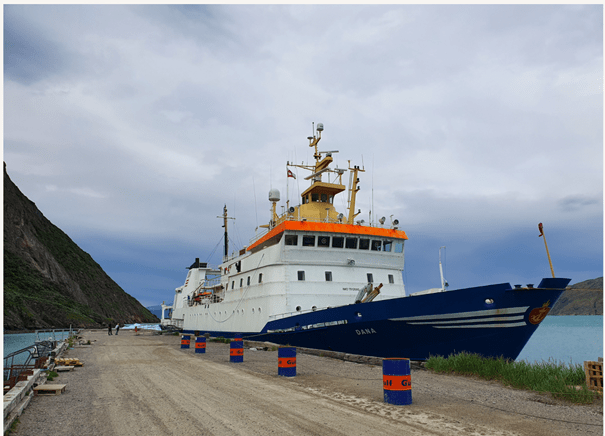
The
research vessel R/V Dana. Photo: Sigrun H Jonasdottir
As a part of our series of interviews with ECOTIP researchers, we spoke with Marja Koski. Marja is a biological oceanographer with a PhD in zooplankton from Finland who is working as an Associate Professor at the Technical University of Denmark (DTU) and has been coordinating ECOTIP since its’ inception. She is particularly interested in the effect of climate change and other anthropogenic stressors on the community composition of plankton.
Despite being invisible to the naked eye, understanding
plankton community composition is extremely important because plankton plays an
important role in both food web efficiency (and thus the amount of fish that
can be harvested) and the biological pump (the amount of carbon that can be sequestered
by the ocean).
Can you tell us a bit about the purpose of this ECOTIP research cruise?
Research cruises are a large part
of ECOTIP, since they present an opportunity for the whole project group to
come together and work intensively and interdisciplinary to obtain scientific
results, for instance new process understanding. The DANA cruise started north
of Nuuk and went up to Disco Bay; there were five onshore/offshore transects
under way. The overall goal was to investigate the interlinkages between
freshwater inflow, plankton community structure, food web efficiency and
pelagic-benthic coupling, and the topics that were studied included biological
carbon pump, sediments and benthic
communities, sedimentation, lipid ecology, fish larvae, phytoplankton,
microbial processes and heavy metals, among other things.
My main task during the cruise was to sample zooplankton and to run incubations to measure metabolic rates of copepods. This gives information of eventual community shifts in relation to hydrography, chemistry and productivity of the system, and combined with information on the metabolic rates of zooplankton, can tell us something about their role in the food web transfer and biological pump. In addition, I helped the cruise leader Dr. Peter Munk from DTU by planning the station procedures.
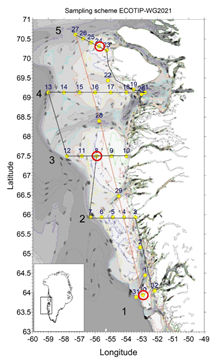
Figure:
Map of the sampling stations. Source: ECOTIP project
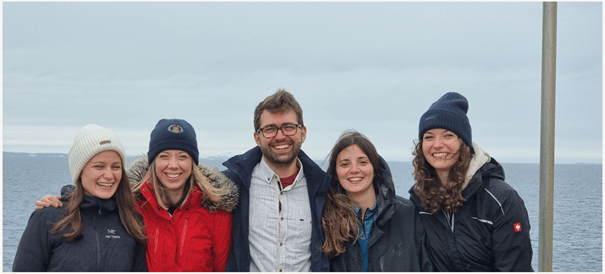
The cruise included 20 scientists, including paleo-oceanographers;
plankton ecologists, microbiologists; chemists; and benthic ecologists. Many of
the participants were PhD students or early career scientists. Photo: Eik Ehlert Britsch
What instruments and methods did you use during the cruise?
Research during the cruise was performed using many
different methods and instruments, both by taking samples and by conducting
incubations. The main instrument as in most oceanographic cruises was a CTD: an
instrument measuring hydrography (temperature, oxygen, salinity and
fluorescence) of the water column. The CTD is connected to a rosette with water
bottles that can be opened and closed at different water depths. In this way we
can know more about the water column structure and from the collected water measure
many things: heavy metals/contaminants, microbial biomasses, invasive species
through eDNA (if an organism leaves traces in the water) and phytoplankton
biomass.
We also used different types of nets for collecting phytoplankton,
zooplankton and fish larvae at different water depths. The incubations (i.e. where
zooplankton is incubated in bottles in the laboratory and observed over a 24 hour
period) helped us to understand what zooplankton eat and how do they use their
food. Sediment traps were also deployed to investigate the sinking fluxes, i.e.
how much and what types of particles (or carbon) fall at particular depths.

Tapping water from the CTD. Photo: Chie Amano
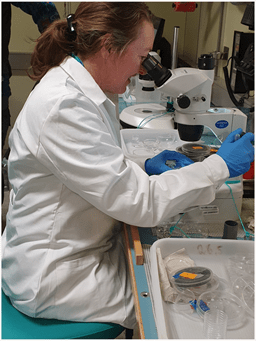
Camilla
Svensen is looking at zooplankton. Photo: Sigrun H Jonasdottir
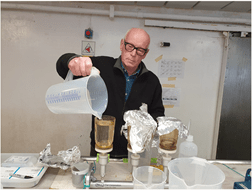
Søren Steenholdt is filtering water for chlorophyll analysis. Photo: Sigrun H Jonasdottir
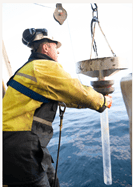
Rumer core for sediment samples is being deployed. Photo: Søren Steenholdt

Katrine Hansen is taking the samples from Rumer core. Photo:
Søren Steenholdt
What changes did you observe in Arctic marine
biodiversity? Did you discover anything that surprised you?
We collected many samples, but since they take time to
analyse, we don’t have the data yet. We will hopefully have some results in the
next half a year or so. However, we observed that plankton communities were extremely
different between the stations, even between stations that lay close to each
other. I was surprised that the differences were so big. There were clear
community shifts between the stations, so it will be exciting to see whether we
can identify which factors contributed to these changes.
How do recent conditions for marine life compare to
historical ones?
We will eventually be able to compare the conditions we
collected on this cruise to a historical cruise conducted in 1950s, since we
followed a similar track with the same station locations than the previous
cruise. Also, we can compare present-day conditions to the past with quite
different time horizons. The paleo-oceanographic researchers on board were taking
sediment samples, and it will be very exciting to see what these samples can
tell us about the changes in conditions during pre-instrumental times over the
recent centuries and millennia. The recent IPCC report states quite clearly
that the conditions in the ocean as they are now and the rate of their change are
unprecedented for many thousands of years, and it will be extremely interesting
to see whether the paleo-oceanographic cores from our cruise also indicate that.
Some of the best demonstrated changes in the ecosystem around Greenland are the changes in the distribution of copepods and fish. Arctic species are decreasing and migrating northwards and Atlantic species are increasing and partially replacing the Arctic ones. What is not documented yet are the potential changes at the community level: for instance, will small copepod species increase and replace larger species? And what about changes in phytoplankton and primary production: will it decrease because of increased stratification or increase because of less ice and thus more light? Our hypothesis is that increased fresh water input will strengthen the stratification and induce a community shift towards smaller species. That community shift will potentially have large consequences for ecosystem functions, and for the services that the arctic marine ecosystem gives to us humans.
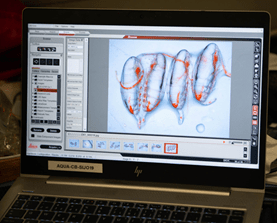
Large
lipid-rich arctic copepods from the samples. Photo: Søren Steenholdt
During the cruise we analysed the community composition at
several trophic levels and linked this to environmental variables, which will
help is to understand when a shift might happen and under what conditions.
What sort of policy implications will your research
have? How can the results of this project be applied to the entire Arctic
region or Global policies?
Process studies such as those we did during the Dana cruise will help us to understand how Arctic marine ecosystems function and how environmental factors influence these functions. This in turn will help us to build predictions for future changes so that we can advise policy makers, managers and anyone depending on the marine environment. One of the most important issues is whether a system is approaching a potential tipping point. In ECOTIP we are looking into a tipping point in the Arctic marine ecosystem, where a change in the physical environment can trigger a large scale community change, with consequences for us all. ECOTIP is valid for the entire Arctic region, and we hope that the insights from ECOTIP will in future contribute to ecosystem assessments in the Arctic and beyond.
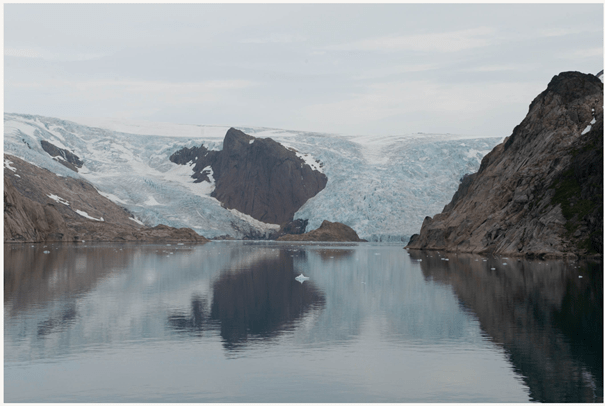
Photo:
Søren Steenholdt
